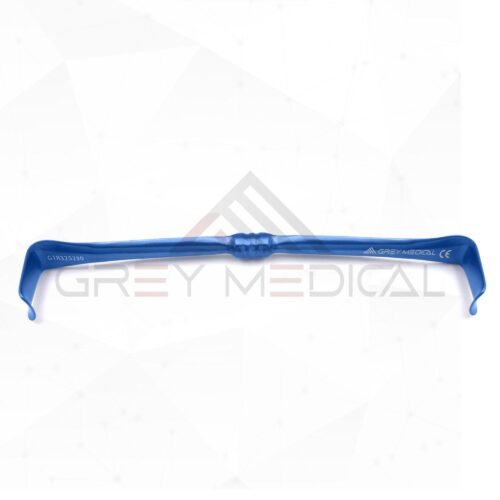Understanding the Richardson-Eastman Retractor: A Versatile Tool in Surgery
Understanding the Richardson-Eastman Retractor: A Versatile Tool in Surgery
Blog Article
Surgical instruments are the cornerstone of every successful procedure, and among these, the Richardson-Eastman Retractor stands out as a vital tool for general and specialized surgeries. The Richardson-Eastman Retractor is a testament to the value of well-designed surgical instruments in achieving clinical success. Designed to aid surgeons in achieving optimal exposure of the surgical field, this retractor is a workhorse in operating rooms worldwide. Its ergonomic design and versatile functionality make it indispensable in procedures requiring precision, visibility, and control.

What is a Richardson-Eastman Retractor?
The Richardson-Eastman Retractor is a hand-held surgical instrument primarily used to retract soft tissues and organs during surgical procedures. This retractor features a double-ended blade design, with one end being larger than the other, allowing surgeons to choose the appropriate side based on the depth and size of the incision. Its sturdy stainless steel construction ensures durability and resistance to corrosion, making it suitable for repeated use and sterilization.
The retractor's handle is designed to offer a firm grip, allowing surgeons to maneuver it with ease during lengthy procedures. This design reduces hand fatigue and enhances control, which is critical in maintaining steady retraction for prolonged periods.
Applications in Surgery
The Richardson-Eastman Retractor is a versatile instrument used across various surgical specialties. In general surgery, it is commonly employed in abdominal procedures, such as appendectomies and laparotomies, to retract the abdominal wall and expose the internal organs. Its ability to gently hold tissues aside without causing damage makes it an ideal choice for these delicate tasks.
In orthopedic surgeries, the retractor plays a key role in exposing joints and bones, aiding surgeons in procedures like hip replacements or spinal fusions. Its sturdy design ensures that it can handle the demands of retraction in these complex and high-stress scenarios. Additionally, the instrument is frequently used in gynecological surgeries, where clear visibility of the pelvic region is essential.
Features that Enhance Performance
One of the standout features of the Richardson-Eastman Retractor is its adaptability. The double-ended blade design provides flexibility, allowing surgeons to use it for both superficial and deep tissue retraction. The blades are typically smooth and curved, which helps in providing gentle yet firm retraction without damaging tissues.
Another notable aspect is the retractor’s ability to maintain its position during procedures, freeing up the surgeon’s hands for other tasks. While primarily hand-held, it can be supported by other instruments or the surgical team, ensuring steady retraction throughout the procedure.
Importance in Modern Surgery
The Richardson-Eastman Retractor is an example of how thoughtful instrument design can elevate surgical outcomes. Its ergonomic handle, durable construction, and versatile blade design make it a trusted tool in the hands of surgeons. Moreover, the instrument’s ability to adapt to different surgical settings and patient anatomies underscores its importance in modern medicine.
By providing surgeons with the visibility and control they need, the Richardson-Eastman Retractor not only enhances procedural efficiency but also contributes to patient safety. When used correctly, it minimizes the risk of accidental injury to surrounding tissues, enabling surgeons to focus on the procedure with confidence.
Conclusion
The Richardson-Eastman Retractor is a testament to the value of well-designed surgical instruments in achieving clinical success. Its versatility, durability, and ease of use make it a mainstay in operating rooms across the globe. Whether in general, orthopedic, or gynecological surgeries, this retractor continues to play a critical role in facilitating precise and effective surgical interventions. As technology and surgical techniques evolve, the Richardson-Eastman Retractor remains a trusted ally for surgeons, proving that even traditional instruments can adapt to meet the demands of modern healthcare.